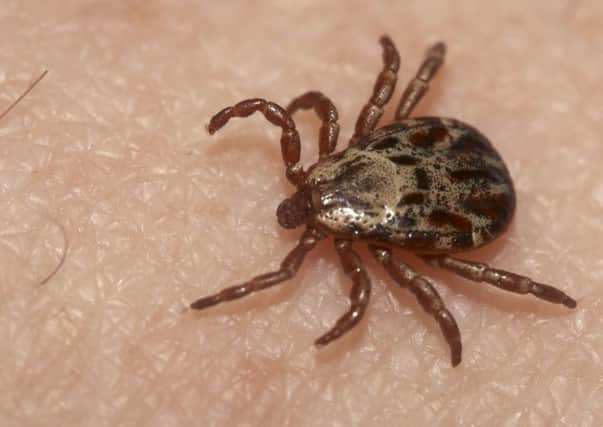Ilona Amos: Check your tick list to cut risk of Lyme disease


In those days we hadn’t heard of Lyme disease, a nasty bacterial infection spread by ticks to humans. Caught early enough it can often be treated effectively with antibiotics, but if left untreated or if treatment is delayed it can go on to develop into a chronic, debilitating and disabling condition.
Lyme disease cases in Europe have increased by around 65 per cent every year for the last 20 years, according to the World Health Organisation. Official figures suggest there are about 3,000 new cases being reported annually in the UK, but since the condition is notoriously difficult to diagnose it’s feared the true numbers of people infected could be a great deal higher.
Advertisement
Hide AdAdvertisement
Hide AdLyme disease is sometimes called the “great imitator” because symptoms are non-specific and similar to those experienced with a number of other neurological conditions – including ME, Alzheimer’s and Parkinson’s.
Research suggests up to 14 per cent of ticks in Scotland will be carrying the corkscrew-shaped bacteria. Unfortunately there is currently no vaccine against the infection, so all you can really do is try to cut the chance of picking up ticks and make sure you know what to do if one does get its teeth into you.
You can reduce the risk of infection by keeping to footpaths and avoiding long grass when out walking. It’s also advisable to wear long-sleeved tops and tuck trousers into socks in tick-infested areas. Light-coloured fabrics may help you spot a tick on your clothes. Insect repellent should be slathered on exposed skin.
It’s important to inspect yourself, as well as children and pets, at the end of a day out. Check over your whole body, including your head and neck and in skin folds, then carefully remove any ticks you find.
Efficient extraction of ticks is an art in itself and many people have a favourite method. However, experts advise against some of the traditional techniques – including rubbing the tick with alcohol to force it out or burning it with a cigarette end. Instead they recommend using tweezers that won’t squash the tick, grabbing it as near to the skin as possible and pulling steadily away, without twisting or crushing the little blighter. Wash your skin with soap and water afterwards, and apply an antiseptic cream around the bite.
If you’re really organised you can buy a special tick-removal tool that makes the job much easier – I can testify to their efficiency.
Luckily people are now becoming increasingly aware of Lyme disease and what to look out for – such as the appearance of a bullseye-like rash around the site of the bite, fatigue, joint and muscle pain, headaches, fever and chills, neck stiffness and nausea.
News that celebs such as Hollywood star Alec Baldwin, UK singer and actress Martine McCutcheon and Phones4U boss John Caudwell and his family are all sufferers has also helped highlight the condition.
Advertisement
Hide AdAdvertisement
Hide AdHowever, campaigners insist much more needs to be done to educate both the public and health professionals to help get speedier diagnoses and treatments for those affected.
Politicians are set to debate the topic in the Scottish Parliament this week after a motion put forward by Tory MSP Alexander Burnett received cross-party support.